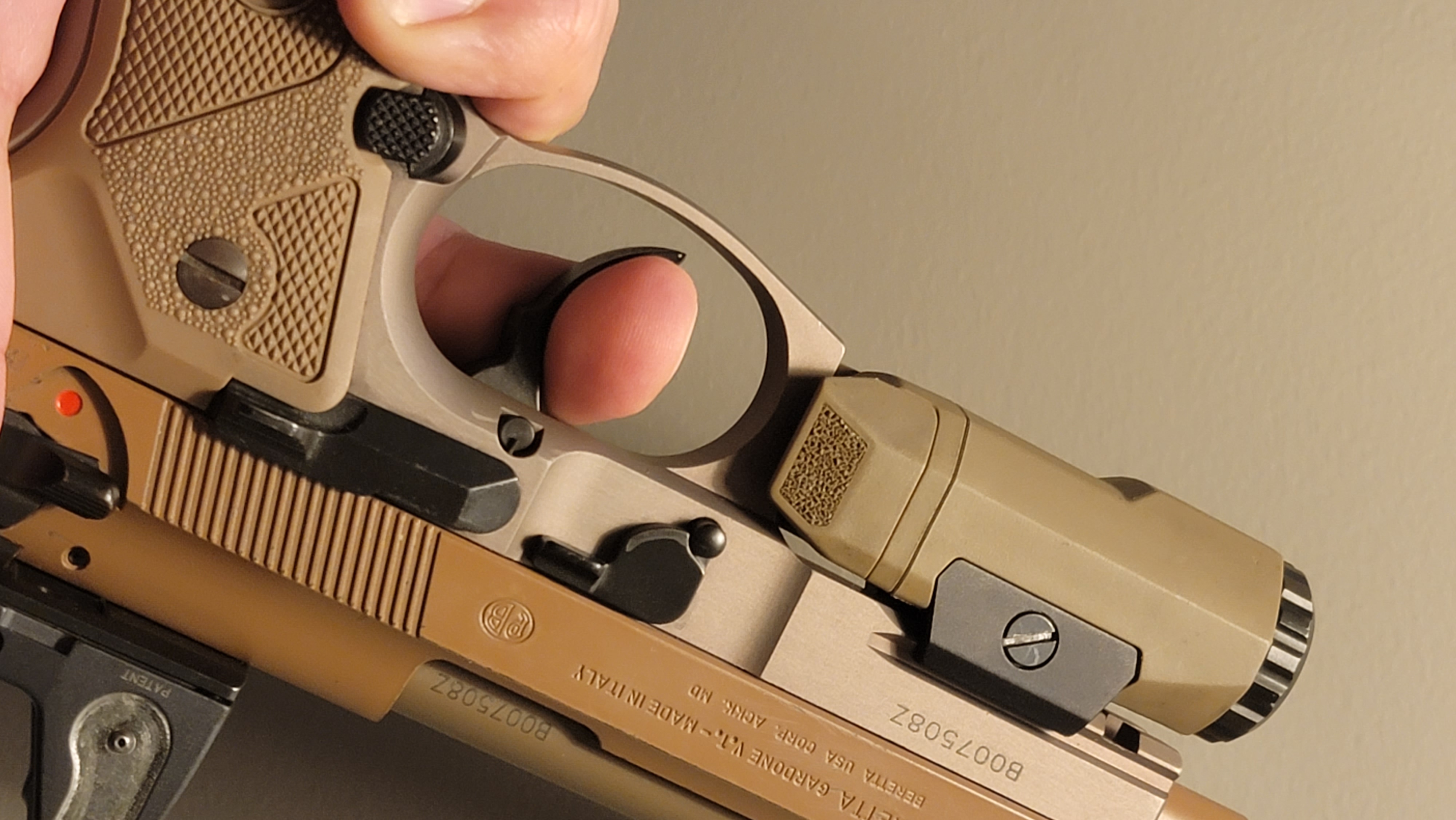Blog # 217 - Does Trigger Finger Placement Matter?

Oct 4, 2022
By Luke Cuenco
0 comment(s)
The ability to shoot a pistol accurately and quickly is something that any firearms owner longs after. While some people out there take to it very quickly, for the rest of us mortals, becoming a proficient pistol marksman takes a lot of hard practice and patience. If you’ve been practicing for any time or have taken pistol courses, you’ve probably heard many firearms instructors tell you to shoot your pistol with the “pad” of your index finger. Early on for me, this was an eye-opening piece of advice that helped me become accurate with some handguns but not all of them. Instead, I’ve found myself coming back to using the first crease of my trigger finger and this has yielded much better results when it comes to shooting quickly and accurately simultaneously.
The idea behind using the middle of the pad of your index finger is pretty simple and a concept that goes for all trigger pulls regardless of the firearm being used - disturb the sight picture as little as possible. Using the tip of the finger or the pad of the index finger to pull the trigger is actually a practice that comes from the early days of bullseye pistol shooting where heavy guns like 1911s are paired with very light triggers that lend themselves well to being pulled by what mathematically should be the most difficult place to apply force - the extreme end of your finger.
However, my self and several other competent shooters over the years have noted that while this practice works very well with race guns and single-action competition guns, when it comes to DA/SA revolvers or even striker-fired firearms, your trigger pull can actually suffer quite a bit due to the increased pressure needed to operate the trigger combined with much longer and sloppier triggers in these factory self-defense handguns.
The truth of the matter is that trigger finger placement does matter but it's not always going to be the same on every firearm for every person. When it comes down to it, the optimal placement is always going to be what works best for you with the particular gun you’re using on that day. And that is why it's still very important that you continue to do dry fire practice and then take that dry fire practice and apply it at the range using smooth, consistent, and deliberate actions to pull the trigger.
